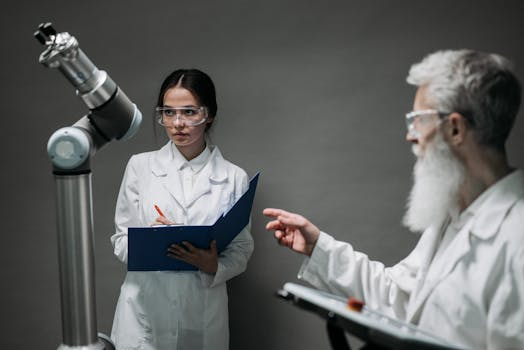AI in the Workplace: Collaborating with Intelligent Machines
As technology continues to advance at a rapid pace, the use of artificial intelligence (AI) is becoming more prevalent in the workplace. From automating mundane tasks to improving decision-making processes, AI is revolutionizing the way businesses operate. However, there has been much speculation around the impact of AI on the future of work and whether it will eventually replace human workers. In this article, we will explore the topic of AI in the workplace and how intelligent machines can be effectively integrated into the workforce.
The Rise of AI in the Workplace
Artificial intelligence refers to the ability of a computer or machine to mimic human intelligence and perform tasks that usually require human cognition. With advancements in machine learning and natural language processing, AI is now capable of analyzing and interpreting data, learning from it, and making decisions without human intervention.
In recent years, there has been a significant increase in the adoption of AI in various industries, including healthcare, finance, and retail. In fact, a study by Gartner predicts that by 2022, 70% of organizations will be using AI in some form. This is primarily due to the potential benefits that AI offers, such as increased efficiency, cost savings, and improved decision-making.
The Benefits of Collaborating with Intelligent Machines
Increase in Efficiency
One of the main advantages of using AI in the workplace is the potential to increase efficiency. Intelligent machines are capable of performing tasks at a much faster rate than humans, without the risk of errors or fatigue. This allows employees to focus on higher-value and more creative tasks, ultimately leading to higher productivity levels.
Cost Savings
Another significant benefit of integrating AI into the workforce is cost savings. By automating routine and repetitive tasks, businesses can save both time and money. This can also reduce the need for a large workforce, resulting in cost savings in terms of salaries and benefits.
Improved Decision-Making
With the ability to analyze vast amounts of data and learn from it, AI can provide valuable insights and assist in decision-making processes. By automating data analysis, businesses can make more informed decisions that are based on data rather than human biases.
Collaborating with Intelligent Machines
Despite the potential benefits, there is still a fear that AI will eventually replace human workers. However, the reality is that AI works best when used in collaboration with humans, rather than as a replacement. Here are a few ways in which businesses can effectively integrate AI into the workforce:
Training and Upskilling Employees
As AI takes over routine and repetitive tasks, employees will be required to focus on more complex and creative tasks. Therefore, it is crucial for businesses to invest in training and upskilling their employees. By providing them with the necessary skills to work alongside intelligent machines, businesses can ensure a smooth transition and maximize the potential benefits of AI.
Ensuring Transparency and Ethical Use of AI
Transparency and ethical use of AI is essential to gain trust and acceptance from employees. Businesses should be open and transparent about the use of AI in the workplace and make sure that it is being used in an ethical manner. This includes being transparent about the data being collected and how it is being used.
Human Oversight and Control
While AI can perform tasks more efficiently and accurately than humans, there is still a need for human oversight and control. This is especially important when it comes to sensitive tasks that require human judgment and moral reasoning. Businesses should ensure that there is a balance between human input and AI decision-making.
In Conclusion
The integration of AI into the workplace is inevitable and has the potential to bring about significant benefits for businesses. However, it is important to understand that the future of work involves collaboration between humans and intelligent machines. By leveraging the strengths of both, businesses can achieve greater efficiency, cost savings, and improved decision-making processes.









